How To Reduce Plastic In Wet Felting
Nov 18, 2023Do you ever have moments of taking a glimpse at your felting table and thinking “OMG, look at all this plastic”? It’s happened to me often, so I’ve been trying to substitute it for other materials whenever I can. And I’ve also been thinking about writing a couple of tips for the felt makers who are interested in reducing plastic, but don’t know what to use instead.
I find fighting plastic usage extremely difficult. Plastic is everywhere, and it’s so ingrained in our daily habits too. But I feel like if I’m conscious about it, there’s at least a way to avoid some of it.
Anyway, after ordering a couple of issues of the German felting magazine FilzFun, I was very excited when I saw an article about this exact topic in one of them, intitled “Filzen ohne Plastik” (Felting without Plastic). It was written by felt maker Corinna Nitschmann and I find it has a lot of great ideas, some of which I had never thought about. So, I’ve spoken to Corinna, who gave me her permission to use her article as a base and add my own experience to write a blog post for you on this subject.
I know this is something you care about too. So, let’s dive in!
FELTING AND FULLING EQUIPMENT
Using bubble wrap as a base for my felt is one of those things I started doing automatically, without giving it a second thought, just because that’s what I saw other felt makers doing.
Actually, I was never a huge fan of it because the bubbles burst as you put pressure on them, and that makes it useless after just a couple of projects. This not only produces a lot of plastic waste, but it also means you must constantly spend money on new materials.
My alternatives
Bamboo mats are among my favorite alternatives to bubble wrap. I use two different types. Bamboo shades – from which I remove the pulling cords and all the metal elements – are great to use for bigger projects. And sushi mats are perfect to felt smaller items.
If you feel that bamboo shades are too aggressive for more delicate projects, one of the solutions is to place a tea towel or some fabric on the mat, so that there’s always something between the mat and the felt.

Another solution I like for more delicate projects is an anti-slip mat. I’m not sure what it’s made of, but it looks like something between rubber and plastic. Plastic again? Yes, I know. But I’ve had and used mine for about 15 years, and it still looks like new. I love fulling thinner pieces with it because it tightens up as I roll, without causing any injury to the fiber. This makes it perfect for nuno felting.
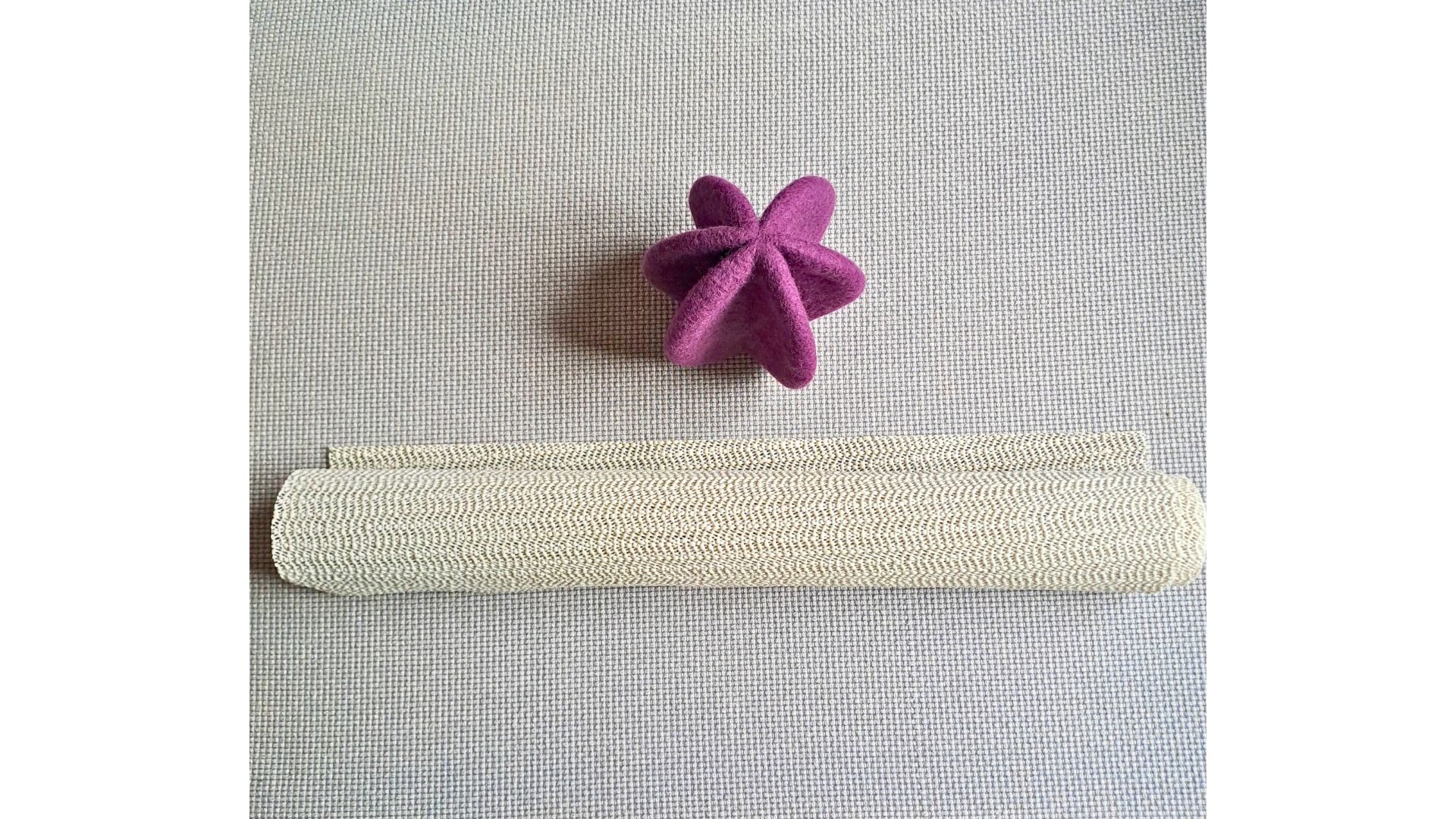
The simplest solution of all – rolling on a plain towel – also works very well. But I prefer using it only for the final shrinkage, when my felting process is much more advanced. In this phase I find a towel really shrinks the pieces fast.
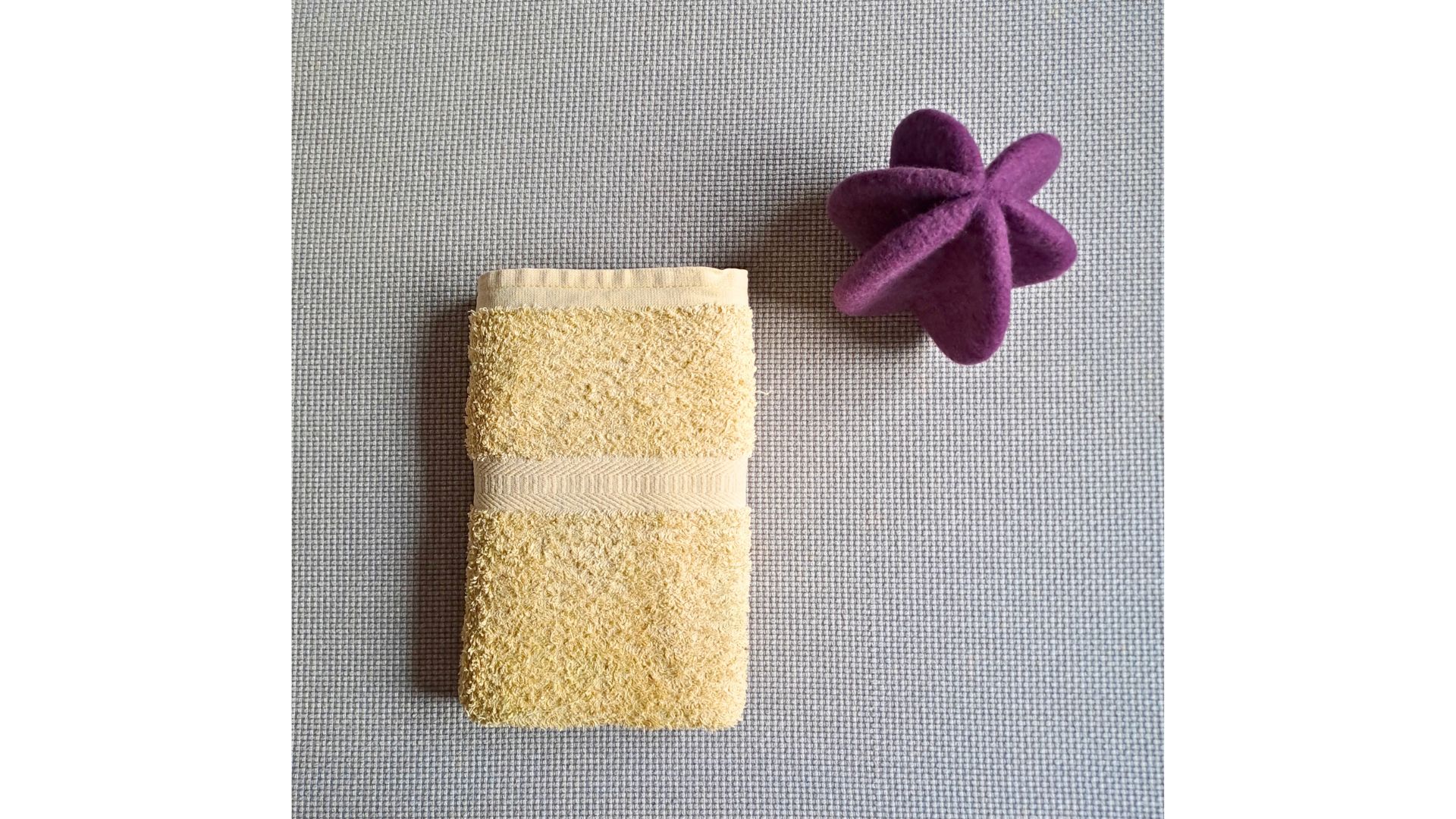
And this is the most recent piece of equipment I bought: a ribbed rubber mat. A Portuguese felting friend – Cristina Rodo – suggested it, and I decided to give it a try. Even though I’m still testing my mat, I’m already sold. It helps shrink my projects fast, it’s durable, it doesn’t slip on the table when I’m fulling, and the ribs prevent chaos when I press the felt and the water comes running out. I’m not sure I’d use it for delicate projects like nuno felt. I still have to test that.
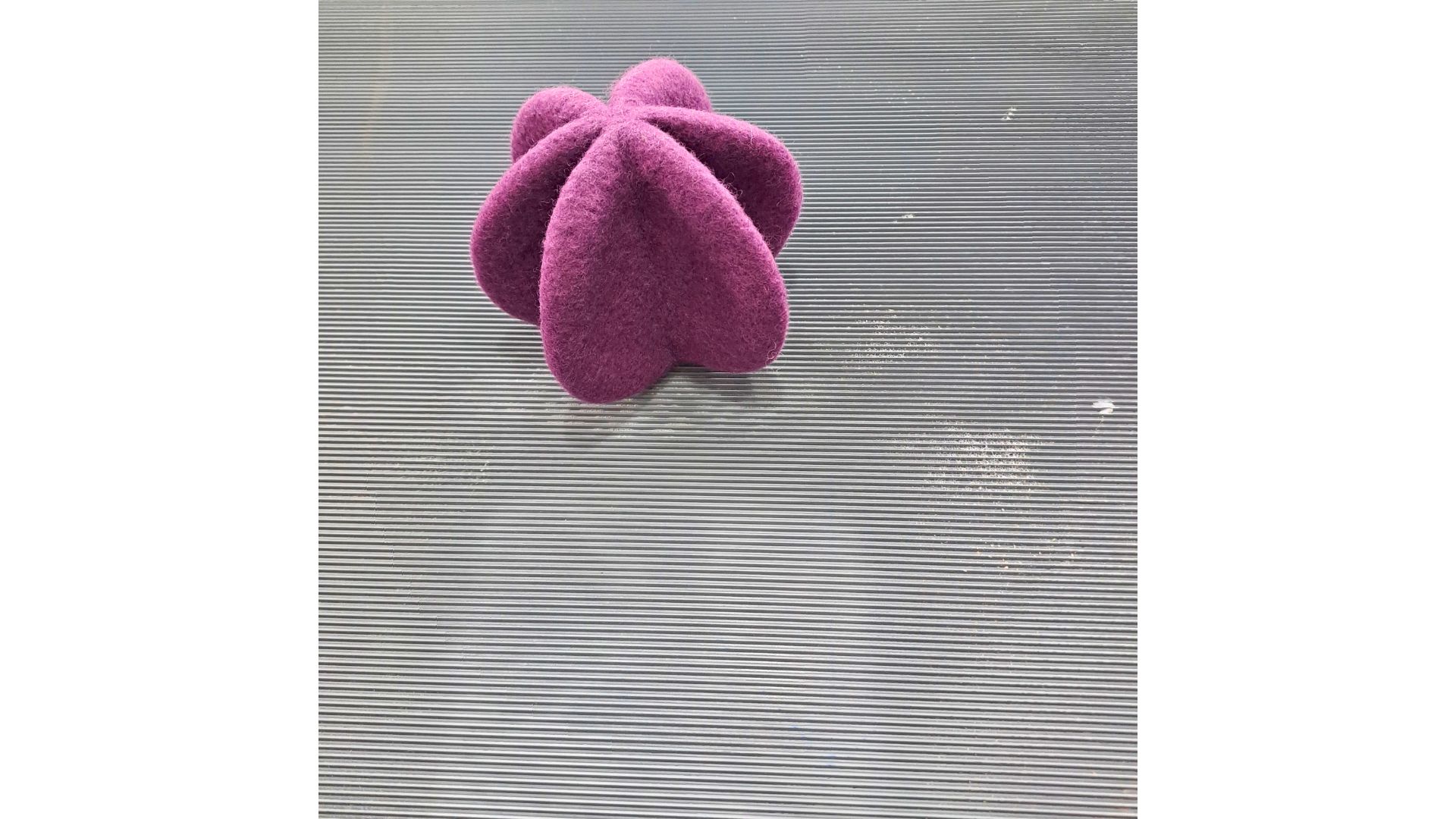
Other suggestions from Corinna
In her article, Corinna has many other suggestions I had never thought of. Here are a few that may be interesting for you.
Raffia fabric can be a good alternative to the bamboo mats. It’s also a natural material, but it has a finer structure. (I’m not sure how durable it is though.)
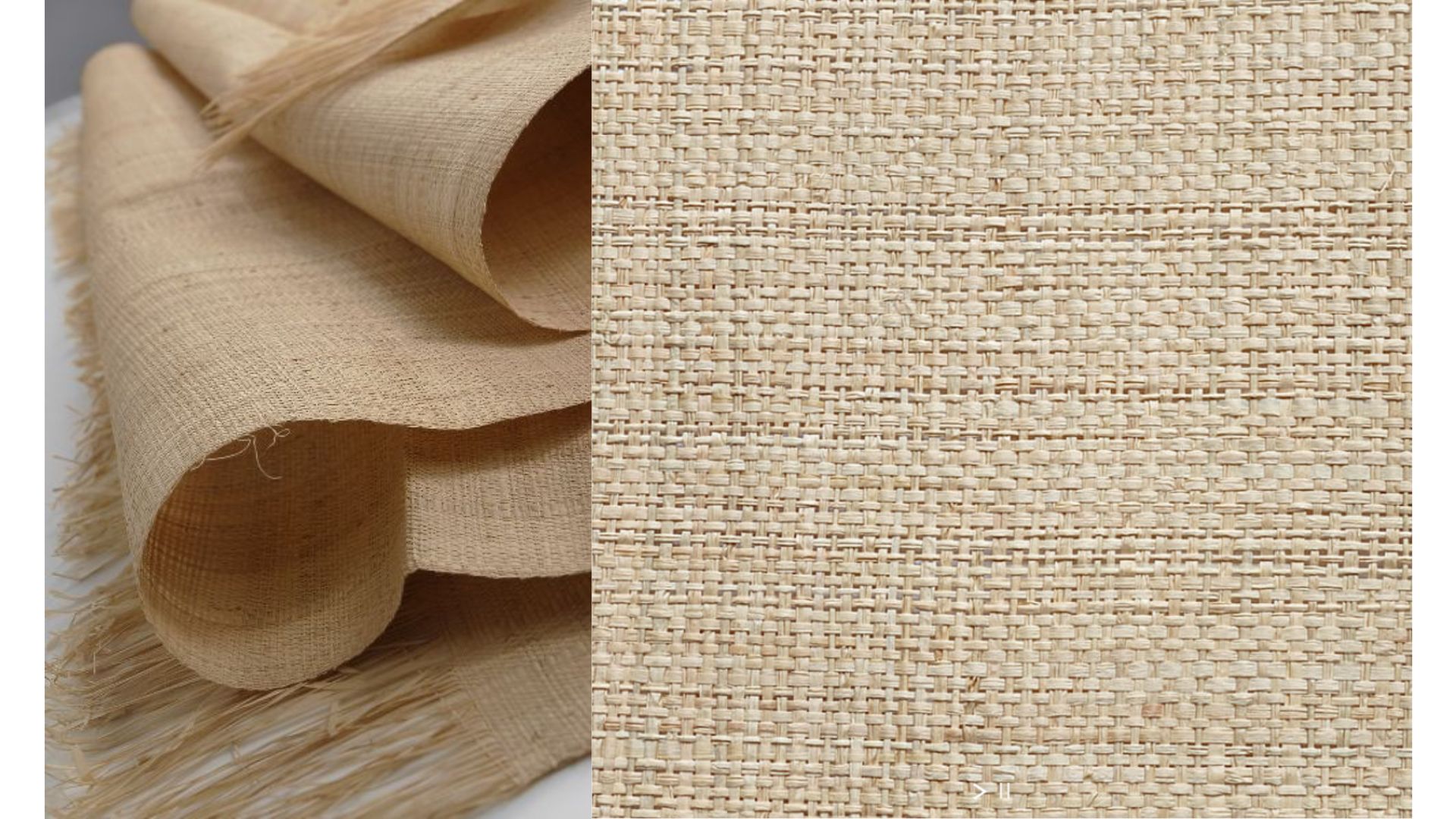
Corinna also suggests felting directly on a table or a wooden board that isn’t completely smooth. (It doesn’t create as much friction, so the shrinkage may not be as fast. But speed is not always the most important thing.)

This is how Corinna describes the ribbed cotton placemats she uses: they absorb excess water very well, but they hold enough moisture to help the felting process, they have a particular weave texture (like little ribs) and they don’t slide on the table. (I love this suggestion. It sounds like a great alternative to the bamboo sushi mats.)
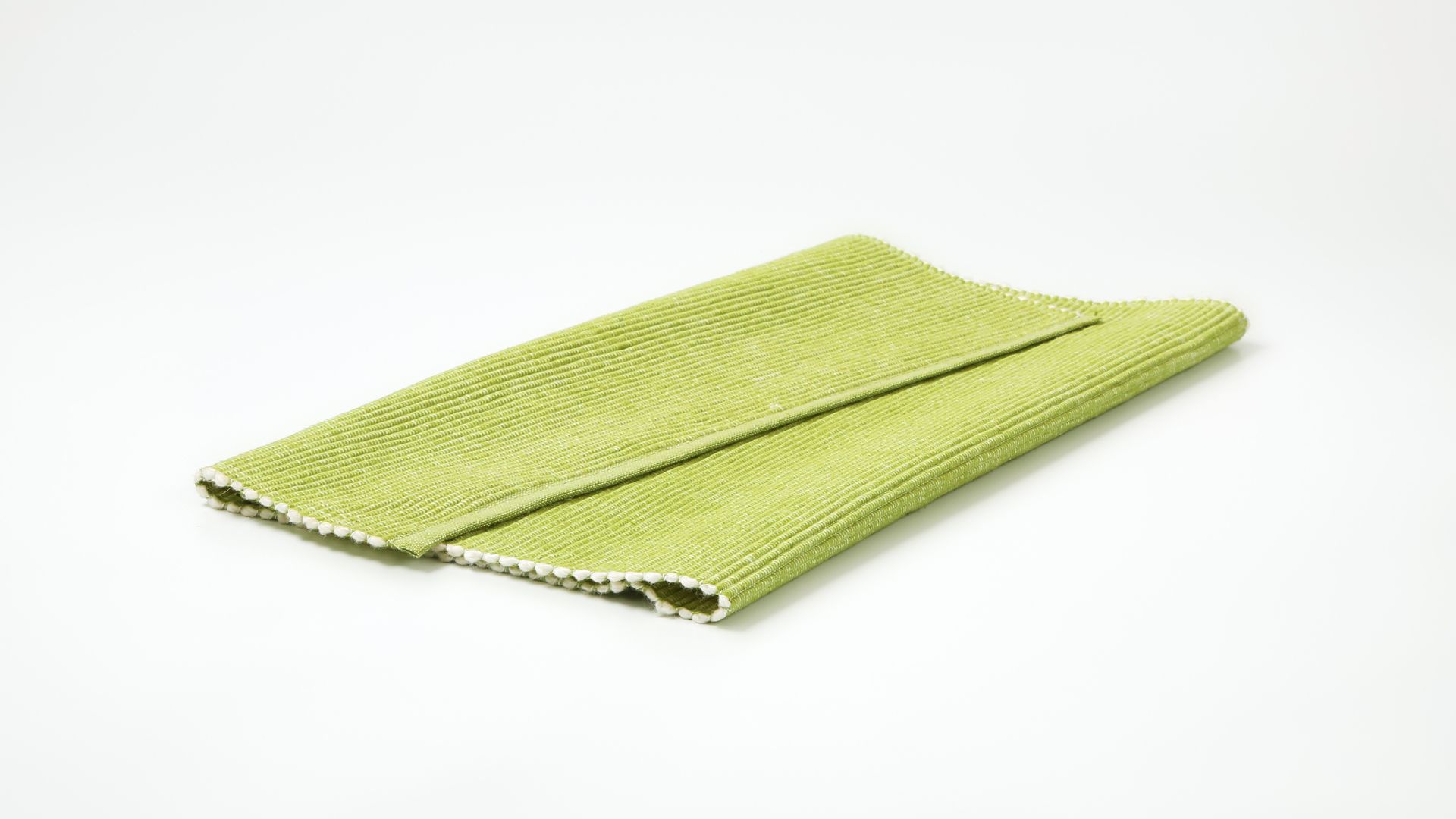
In Mongolia, an old felt rug is used as a base to roll new felt rugs. It’s called “mother felt”. Because it’s been completely fulled, the new wool doesn’t attach to it anymore. (Here’s an idea I’d also like to try. At the very least, it’s a great way to see how felt was traditionally made.)
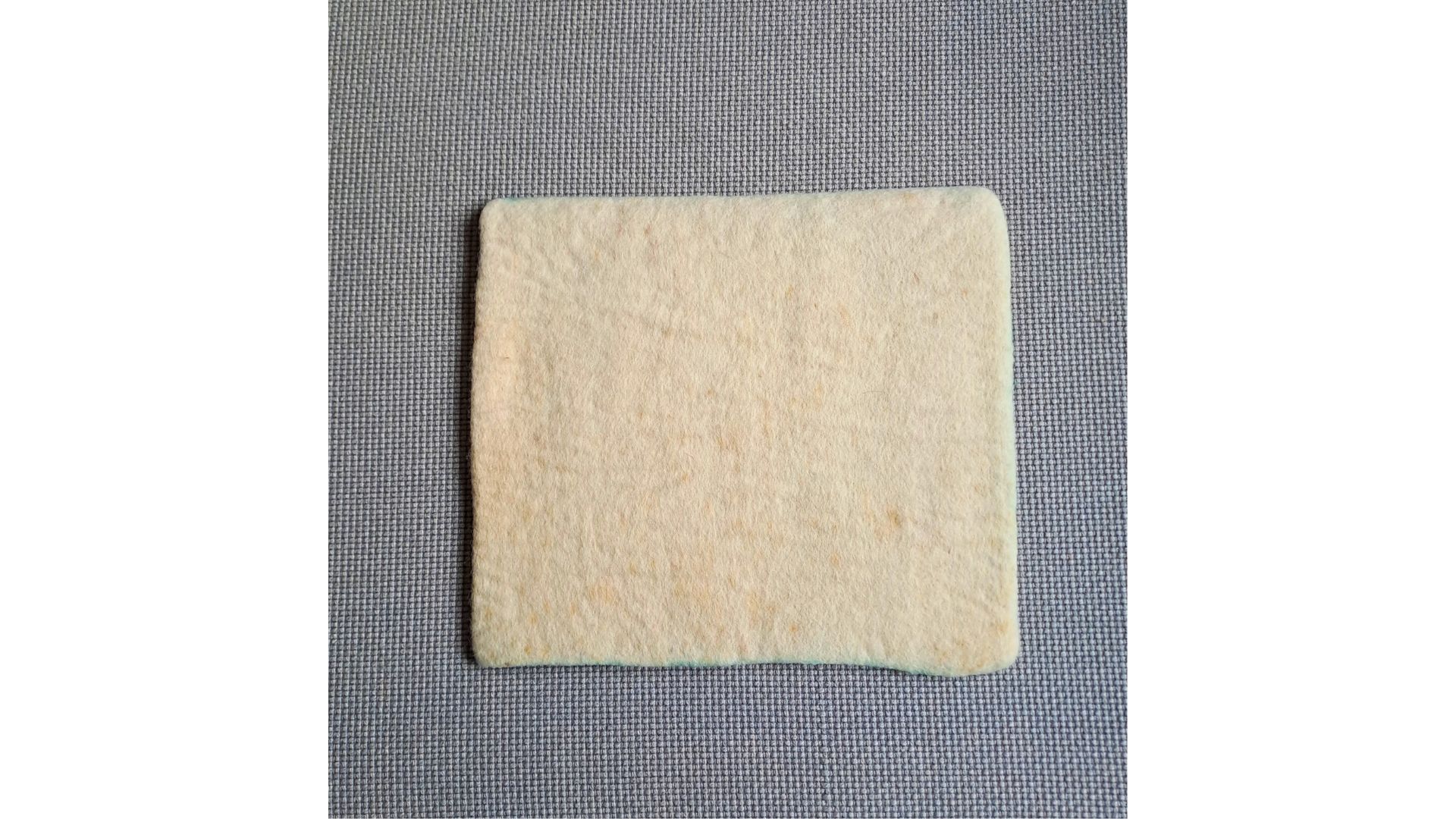
Corinna also suggests using shoe mats or car mats. Since they’re usually made of plastic, the idea is not to go and buy them new, but to recycle them if you already have them at home and aren’t using them anymore.

RESIST MATERIAL
Plastic – whether it’s bubble wrap, plastic bags, or flooring underlayment – is the most commonly used material to make resists for wet felting. I have to say, this is where I’ve been more resistant to substitute plastic for other materials. Honestly, the few times I tried cardboard, I wasn’t happy with the results. So, I can’t say I’ve found a satisfying alternative yet.
But Corinna makes a couple of suggestions that I find worth trying. Here are my favorites from her article.
Recycled denim fabric – The fabric shouldn’t be too thin or torn. Otherwise, the wool will felt between the denim threads and fibers. If you overcast the edges, so that they don’t fray, you can use this template several times. (This is one idea I will definitely try!)
Ribbed cotton placemats – Use them in the same way: cut in the shape you want and overcast the edges.
Tightly fulled pieces of flat felt – Like the “mother felt” used in Mongolia, if you use tightly fulled felt for your templates, it won’t attach to the new wool. (Another idea I’m committed to trying.)
And there are many more plastic items used in wet felting, like gloves and nets, for example. When we have certain habits, that we repeat automatically, it’s not always easy to change them. And completely getting rid of all synthetic materials is certainly difficult.
So, what I’m trying to do right now is to start with one thing and make changes progressively to make sure I’ll keep up with my new habits. And this is my suggestion to you too.
We love wet felting for different reasons, but surely one of them is that it’s a natural material. So, why not make an effort to keep our wet felting process as natural as possible too?
[This blog post was inspired by the article “Filzen ohne Plastik” by Corinna Nitschmann, published in FilzFun, n. 73]
Get fresh tips, video instructions, news about class registrations, as well as exclusive early bird offers directly into your inbox.

